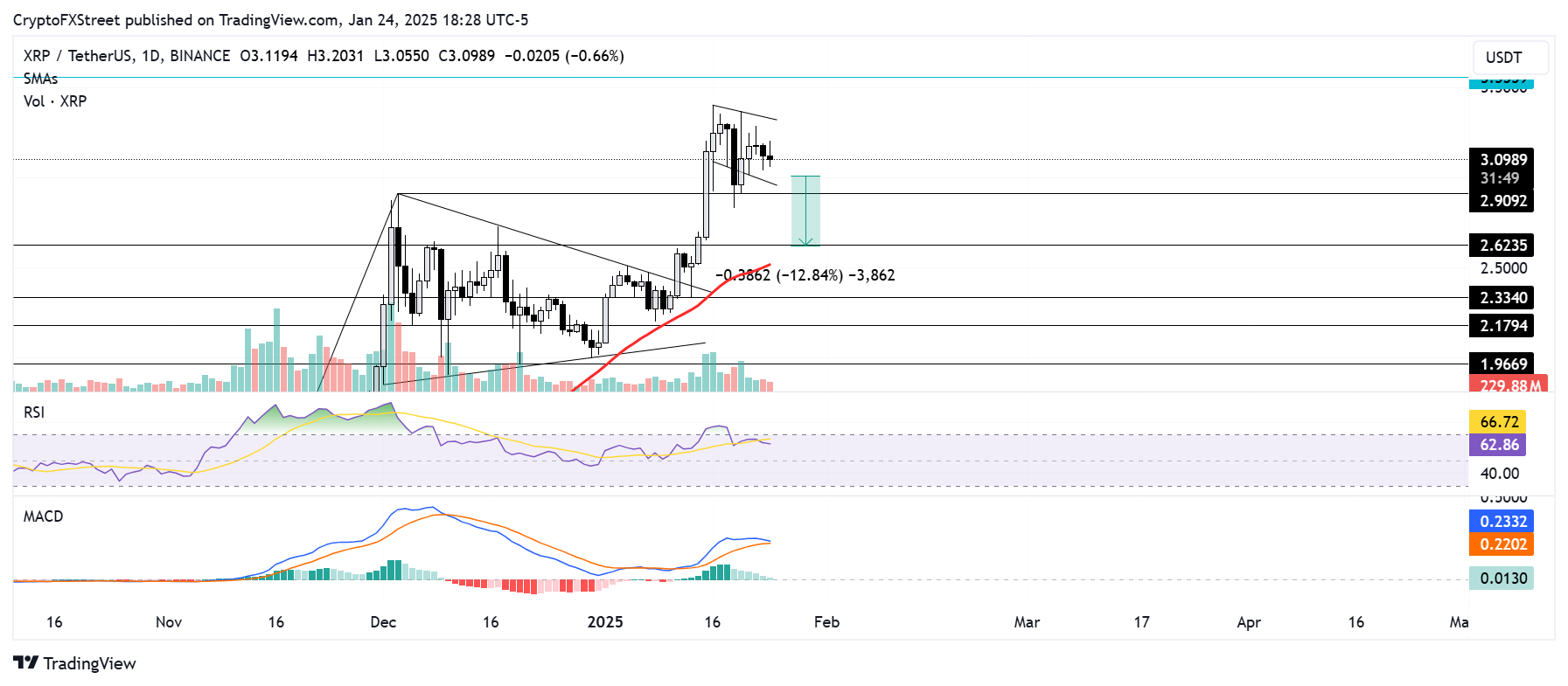XRP poised for 15% decline following Ripple's April 16 cross-appeal brief request
- Ripple filed a request stating it wishes to submit a cross-appeal brief in its case with the SEC on April 16.
- The crypto community anticipates that the new SEC will withdraw the case against Ripple considering its recent pro-crypto moves.
- XRP could complete a 15% decline following signs of rising bearish pressure across its technical indicators.
XRP's price remained weak on Friday following Ripple's filing to the US Court of Appeals for the Second Circuit. Ripple seeks to submit its cross-appeal brief by April 16 after the Securities & Exchange Commission (SEC) filed its appeal brief last week against Judge Analisa Torres's ruling.
Ripple solicits submission of cross-appeal brief by April 16
In the latest development in the SEC vs Ripple case, Ripple filed an official statement proposing a date for its cross-appeal brief.
The proposal, issued to the US Court of Appeals for the Second Circuit, stated that Ripple had requested April 16 as the due date for its brief.
"Under this Court's Rule 31.2(a)1(B), Ripple requests a due date of April 16, 2025 for its brief," the filing stated.
Ripple's cross-appeal brief will seek to tackle the points raised by the SEC in its opening brief submitted last week.
The regulator argued that Judge Torres's ruling in July 2023 was wrong and that Ripple's sales of XRP to retail investors were a securities offering.
In addition to the SEC's stance, non-profit firm Better Markets filed an Amicus Brief on Wednesday, supporting the agency's claim against Judge Torres's verdict. The firm urged that the court overturn what it termed "especially consequential and legally erroneous aspects of the district court's decision."
However, Ripple's Chief Legal Officer Stuart Alderoty mentioned that the SEC's appeal is a "rehash of already failed arguments."
The crypto community remains optimistic that the court will stay in favor of the company and uphold Judge Torres's decision. The positive sentiment is tied to the new SEC administration’s progress under acting Chair Mark Uyeda in countering some of the actions of the previous leadership under Gary Gensler.
This includes revoking the controversial Staff Accounting Bulletin (SAB 121) on Thursday, which was seen as a major win for the industry.
The crypto community expects the new SEC administration to drop the case against Ripple, as it has shown good progress in establishing clear regulatory guidelines for the digital asset industry.
Additionally, Ripple executives, including CEO Brad Garlinghouse, appeared at President Donald Trump's inauguration, a potential move to strengthen ties with the current presidential administration.
XRP could complete a 15% decline following bearish signs in technical indicators
XRP saw $4.97 million in futures liquidations in the past 24 hours, per Coinglass data. The total amount of long and short liquidations accounted for $2.90 million and $2.07 million, respectively.
XRP is trading within a key descending channel as it continues its week-long consolidation. Since its heavy decline last weekend, XRP bulls seem to have run out of steam.

XRP/USDT daily chart
XRP could find support at the channel's lower boundary near $2.90. A bounce off this level could see the remittance-based token rising to test the channel's upper boundary resistance.
However, a move below the channel's support and the $2.90 level could see XRP complete a 15% decline to $2.62.
Meanwhile, the Moving Average Convergence Divergence (MACD) line looks set to cross below its signal line while its histogram tests its neutral level line. Crosses below the signal line and neutral level could spark increased bearish pressure for XRP. The Relative Strength Index (RSI) is below its overbought region.
A daily candlestick close above $3.40 will invalidate the bearish thesis.
Ripple FAQs
Ripple is a payments company that specializes in cross-border remittance. The company does this by leveraging blockchain technology. RippleNet is a network used for payments transfer created by Ripple Labs Inc. and is open to financial institutions worldwide. The company also leverages the XRP token.
XRP is the native token of the decentralized blockchain XRPLedger. The token is used by Ripple Labs to facilitate transactions on the XRPLedger, helping financial institutions transfer value in a borderless manner. XRP therefore facilitates trustless and instant payments on the XRPLedger chain, helping financial firms save on the cost of transacting worldwide.
XRPLedger is based on a distributed ledger technology and the blockchain using XRP to power transactions. The ledger is different from other blockchains as it has a built-in inflammatory protocol that helps fight spam and distributed denial-of-service (DDOS) attacks. The XRPL is maintained by a peer-to-peer network known as the global XRP Ledger community.
XRP uses the interledger standard. This is a blockchain protocol that aids payments across different networks. For instance, XRP’s blockchain can connect the ledgers of two or more banks. This effectively removes intermediaries and the need for centralization in the system. XRP acts as the native token of the XRPLedger blockchain engineered by Jed McCaleb, Arthur Britto and David Schwartz.

